Review for Hana-bi
Introduction
Sometimes I just don’t understand the film industry. Well actually I do understand that it’s always, always about the bottom line, but the film fan in me, the person who watches film for the aesthetic, for creativity, for originality is often nonplussed at industry decisions. Take Hana-bi for example. It’s a film that won the Golden Lion at the 1997 Venice Film Festival. You’d expect films like that to be lauded, to be treasured by their countries, the kind of film that gets archived for posterity. But it’s actually taken Third Window Films, and the assistance of Gareth Evans, director of The Raid to get the film restored for a shiny Blu-ray presentation. In actual fact, Third Window Films will be presenting three Takeshi Kitano films at the start of 2016, all given new 2k transfers, restored and spruced up, and along with Kikujiro and Dolls, Hana-bi’s release seems to indicate that Third Window Films will be curating Takeshi Kitano’s back catalogue in the same way that they have done for Shinya Tsukamoto in recent years. Since I’ve only seen one Kitano helmed feature previously, Kikujiro, I feel like I’m embarking on a new journey of discovery.
A stakeout that goes catastrophically wrong proves to be the turning point in the lives of two police detectives. Horibe is alone on the stakeout, without back-up when he falls victim to a shooting that puts him out of the police force, and into a wheelchair. Nishi was supposed to be on the stake-out, but everyone, including Horibe had convinced him to go to the hospital instead, to be with his terminally ill wife. His guilt over that sets off a chain of events, which makes matters worse when he and his team try to apprehend Horibe’s assailant. Forced to leave the police, up to his ears in debt with the yakuza, and with the doctors telling him that there’s nothing to do but to take his wife home, he decides to take her on a trip.
Picture
Hana-bi gets a 1.85:1 widescreen 1080p transfer on a dual layer Blu-ray. It’s certainly come up a treat given the 2k restoration, clean and free of print damage and signs of age, and stable throughout. The film has a discrete layer of natural film grain, and the initially subdued palette becomes a lot richer and more vibrant as the story unfolds, and the film’s themes and style become apparent. The Blu-ray offers a great level of detail, with no signs of compression or banding. The contrast is what you might expect from film stock of the period, not spectacular, with blacks a little lacking in depth, but that’s a small nit to pick in an otherwise impeccable Blu-ray presentation.
The images in this review have been kindly supplied by the distributor.
Sound
You get a DTS-HD MA 2.0 Stereo Japanese track with optional English subtitles. The dialogue is clear, the action scenes and the film’s ambience get a decent amount of presence via the stereo, and Joe Hisaishi’s gentle and reflective music score counterpoints the story extremely effectively. The subtitles are accurately timed, and free of typographical error.
Extras
The disc presents the film with an animated menu.
You’ll have to go to the audio set-up to find the Mark Schilling audio commentary. I gave it a quick sample and found it to be informative, but quite gappy.
In the extras, you’ll find The Interview With Director Takashi (sic) Kitano, which lasts 14:47 and is presented scaled up to 720p, It comes from a 1999 French release, but the subtitles are in English of course. Takeshi Kitano is interviewed about his career in general.
The typo crops up again for the Director Takashi Kitano Retrospective, which lasts 27:14 720p, of which the first 12 minutes are given over to the trailers of his films up to and including Hana-bi, before launching into a behind the scenes, making of featurette.
Finally the new UK trailer is here, running to 2:16 HD.
Conclusion
Since I first heard of Hana-bi several years ago, I’ve been somewhat wary of watching it, as its violent content has been sold first and foremost, and I knew little else about the film. Now that I’ve finally seen it, it certainly does deserve a reputation for brutal and uncompromising violence; it fully earns that 18 rating, but violence is the least of what Hana-bi is about. It’s probably the most mellow, thought-provoking, funny, heart-warming, violent police thriller I have ever seen. It’s also breathtaking beautiful, a cinematic work of art, visually rich and adroitly directed.
It’s the tale of two cops, detectives Nishi and Horibe, and how they both react to a traumatic event in their lives. The same event leads them on drastically different paths, life affirming, or self-destructive, although it’s unclear at first as to which is which. Certainly neither of them comes through the event unscathed, emotionally or physically. Horibe is crippled in the shooting, left wheelchair-bound, and forced to retire from the police. On top of that his family leaves him, so life certainly looks bleak. A random musing about trying art, leads Nishi to get him some art supplies, and he starts taking a closer look at the world around him through different eyes.
Nishi on the other hand had it hard even before the trauma, with his wife terminally ill, and both of them affected by the tragic loss of their child. That he was at the hospital with his wife when he should have been on the stakeout where Horibe was shot leaves him nursing no small amount of guilt, and trying to assuage that guilt at first only makes matters worse, forcing him to quit the police as well. Like Horibe, he too has nothing left to lose, in debt with the yakuza, still wanting to make amends, he no longer feels constrained by the law that he previously upheld. But the one thing he wants to do is what the doctors suggested, take his wife on a trip.
What follows is half road-movie, half romance, which is an unlikely direction for what started off as a cop thriller. But Hana-bi is hardly conventional. It’s not a film that’s replete with dialogue and exposition; it’s a story that is told visually, first and foremost, a narrative that the audience has to work at. On top of that, it’s a film that unfolds non-linearly, jumping back and forth through the storyline, telling the characters’ emotional narratives. On top of that, art lies at the heart of Hana-bi, and not just in Horibe’s character. Even before he briefly tries that artist’s beret, the film’s scenes are composed with works of art in the background, or even the foreground. Given the characters’ reticence to speak, especially when it comes to Nishi and his wife, this really is a film where scenes, composition, and framing are far more important, visual storytelling at its finest.
Given that, this film really does come to life on Blu-ray. Naturally I haven’t seen the DVD to compare, although some of the scaled-up footage in the extra features might give some idea of what to expect. On Blu-ray, Hana-bi is a film that draws the viewer in, startles with the brutality of its violence, at odds with Joe Hisaishi’s reflective score, but also manages to enchant with its visuals, entrances with an emotional narrative that entertains, thrills, and moves the viewer. This is what I want from cinema!
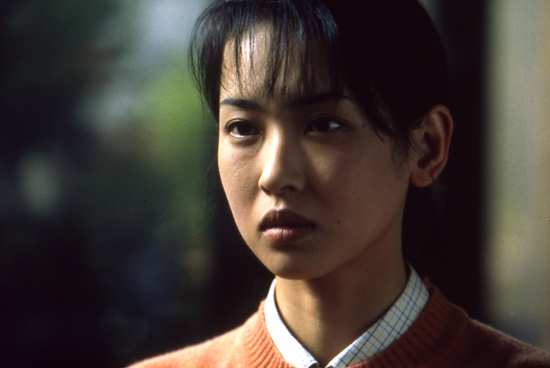
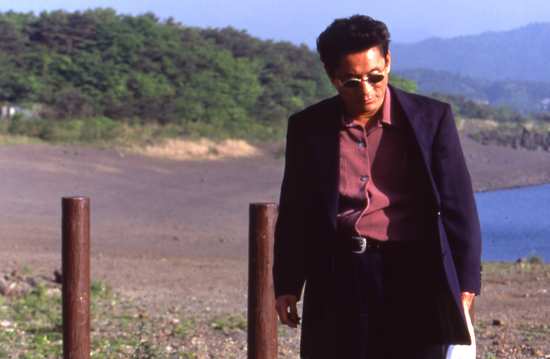
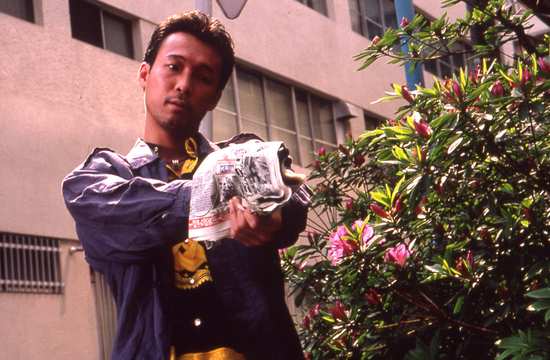
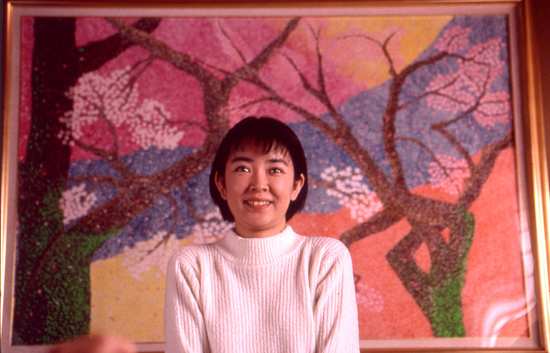
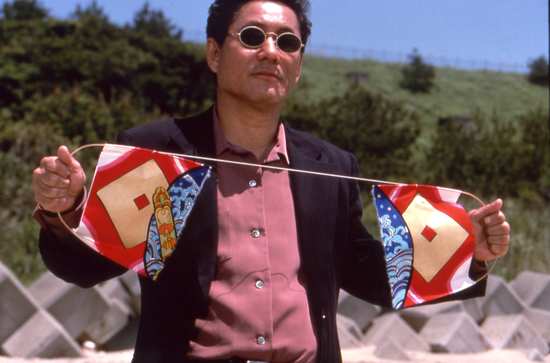
Your Opinions and Comments
Be the first to post a comment!